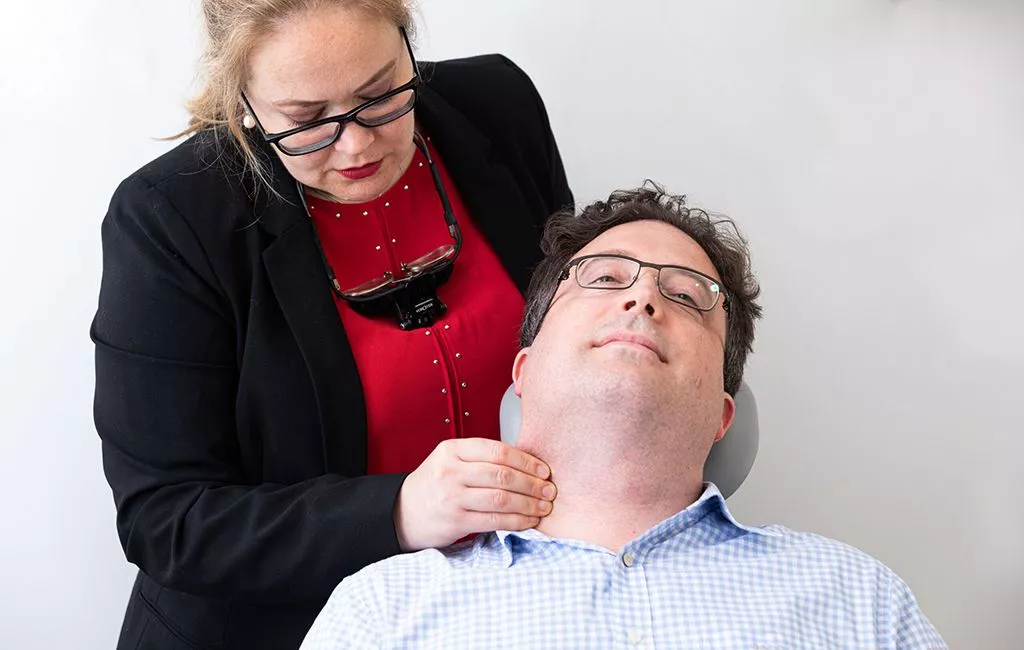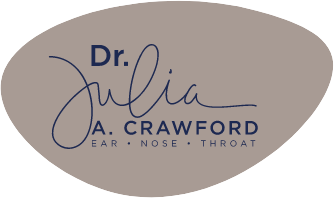Neck lumps are a common condition in adults and in most cases are benign and not serious. However, they can represent something more serious and should prompt you to go and see your GP.
When should you have a neck lump checked?
The most important thing to be aware of is that if you have a persistent lump for more than 6 weeks and any other unusual symptom then you should consult your doctor. They will examine you and determine what further (if any) investigations are needed to confirm that the lump is not cancerous.
What are common causes of benign neck lumps?
Most often neck lumps are caused by swollen lymph nodes which can result from infection or inflammation.
Other benign neck lumps can develop from structures in your neck including:
≈ The thyroid and parathyroid glands
≈ Skin – from abscesses and sebaceous cysts or moles
≈ Fat tissue
≈ Nerve tissue
≈ Blood vessels
≈ Neck cysts
Some benign conditions that cause neck lumps can be the result of salivary gland conditions such as:
≈ Parotid glands
≈ Submandibular glands
≈ Sublingual glands
What is head and neck cancer?
In Australia, head and neck cancer is the 7th most common type of cancer and can originate from different cancers in the head and neck. It more commonly occurs in people over 40 and is more common in men.
The most common head and neck cancers are from a tissue called squamous epithelium which lines the inside of our mouth, nose, and throat. Types of head and neck cancers are:
≈ Nasal and paranasal sinus cancer which originates from the tissue that lines the nose and the sinuses
≈ Cancer of the mouth
≈ Salivary gland cancer
≈ Pharynx cancer (cancer of the throat)
≈ Larynx cancer (cancer of the voice box)
We don’t know what causes a person to get head and neck cancer, but there are risk factors which increase a persons chance of developing the disease.
What are the risk factors for increasing the development of head and neck cancer?
≈ Tobacco use. This is the main risk factor for head and neck cancer and heavier use increases the risk. This includes smoking chewing of tobacco or the use of snuff
≈ Alcohol use. Heavy use of alcohol or combining alcohol and tobacco use increase the risk of developing head and neck cancer
≈ Infection with Human Papillomavirus (HPV)
What are the signs and symptoms of head and neck cancer?
Signs and symptoms vary for each individual, but can include:
≈ A neck lump
≈ A sore that doesn’t heal properly
≈ A red or a white patch inside the mouth
≈ A hoarse voice or difficulty speaking
≈ A lingering sore throat
≈ Persistent pain in one are where there are no other signs of infection like a decrease in hearing
≈ Bleeding from the nose or mouth
≈ Having difficulty with swallowing, chewing, or opening the mouth
≈ A painful or block ear
≈ Pain or numbness in the face
≈ Painful jaw or loose teeth
≈ Unexplained weight loss
Although these symptoms may not mean you have head and neck cancer, you should attend to your doctor for a consultation, examination, and investigation.
How is head and neck cancer treated?
The type of treatment is dependent upon the location of the cancer and how much it has spread, but most cases of head and neck cancer will require a combination of surgery and/or radiation with chemotherapy.
It is important that head and neck cancer is managed by a Multidisciplinary Head and Neck Cancer treatment team (MDT). Dr Julia Crawford is a member of the St Vincent’s Sydney Campus MDT which is held weekly at the Kinghorn Cancer Center. This meeting involves highly specialized doctors and allied health staff who primarily look after Head and Neck cancer patients.
What is the latest treatment modality for head and neck cancer?
The latest treatment modality is Trans Oral Robotic Surgery or TORS. This is an effective treatment for cancers affecting the tonsil or back of the tongue. The rise in case numbers of cancers in the tonsil and the back of the tongue is related to the Human Papilloma Virus (HPV). This occurs in a much younger group of patients than those traditionally at risk of throat cancers. Prior to TORS patients with cancers in this region were typically treated with radiotherapy with chemotherapy sometimes added in as a radiation sensitizer. TORS offers patients an alternative treatment pathway which can decrease long-term side effects associated with treatment.
What is TransOral Robotic Surgery (TORS)
TORS is a less invasive alternative to open surgery and uses a specialised medical robot which is controlled by a robotic trained surgeon. Dr Julia Crawford is one of only a few Fellowship-trained robotic head and neck surgeons in Australia. Using TORS provides her with the use of a wide range of fine, specialised operating tools, gives her more light and magnification and providers her a better view of the smaller and less accessible neck structures when performing surgery.
TORS means that the treatment time can be reduced and the longer-term treatment side effects may also be improved.
What to do if you have been diagnosed with a head and neck cancer?
If you have had a head and neck lump investigated and have been diagnosed with head and neck cancer, a tonsil or back of the tongue cancer, please ask your GP for a referral and call our team 02 8319 8434 to arrange for a consultation with Dr Crawford. She will be able to discuss your condition with you in detail and outline the most suitable treatments that are available.


